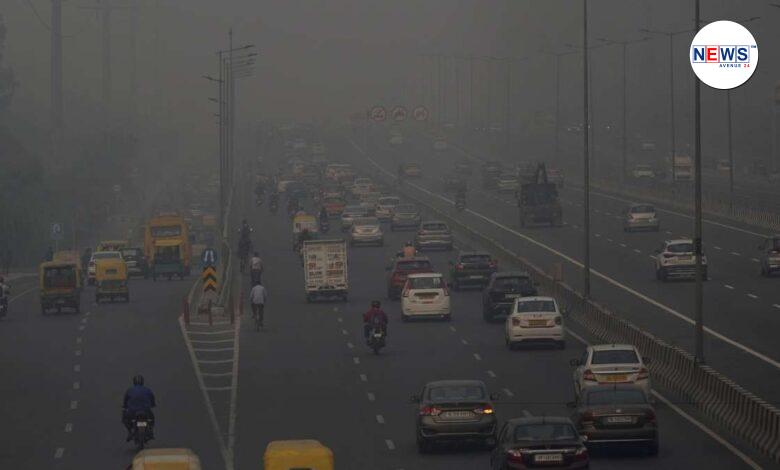
Delhi remains under blanket of smog as air quality continues to be severe, GRAP IV imposed
The National Capital Region (NCR) has been battling ‘severe’ air pollution over the past few days. Stage IV of GRAP was invoked in Delhi-NCR on Sunday in view of the worsening air quality.
Delhi pollution: Delhi continues to be covered in a thick haze as the air quality remains in the ‘severe’ category, as per the Central Pollution Control Board (CPCB). Pollution levels in Delhi have remained in the ‘severe’ category for the past few days recording an air quality index (AQI) of above 400 range at several locations in the national capital.
A toxic haze persisted over Delhi-NCR for the seventh consecutive day, obscuring landmarks from view and causing significant problems for people with existing respiratory issues.
#WATCH | Air quality across Delhi continues to be in the 'Severe' category as per the Central Pollution Control Board (CPCB).
(Visuals from Kartavya Path, shot at 6:52 am today) pic.twitter.com/7ZKlaQa7UM
— ANI (@ANI) November 6, 2023
AQI across Delhi in ‘severe’ category
According to the CPCB data, the AQI in most areas across the city remained in the ‘severe’ category at 8 am. Most monitoring stations across Delhi recorded an air quality index (AQI) of above 400. AQI was recorded at at 466 in RK Puram, 402 in ITO, 471 in Patparganj and 488 in New Moti Bagh.
According to the Centre-run System of Air Quality and Weather Forecasting (SAFAR), the overall PM2.5 level (fine particulate matter in the air with a diameter of less than 2.5 micrometer) was recorded at 321 and the PM10 level at 488 in Delhi.
AQI in NCR region
The persistent air pollution has forced people to be choked and compelled them to stay indoors. The neighbouring national capital region has witnessed a similar fate which has also continued to see an AQI in the ‘Severe’ category. A thick layer of haze engulfed the capital city as people woke up gasping for breath.
Noida also woke up to ‘severe’ air quality with almost all of its monitoring stations recording over 616 AQI as of 8 am. Gurugram, also in NCR, also recorded ‘severe’ category air quality with AQI at 516.
An AQI between zero and 50 is considered ‘good’, 51 and 100 ‘satisfactory’, 101 and 200 ‘moderate’, 201 and 300 ‘poor’, 301 and 400 ‘very poor’, and 401 and 500 ‘severe’. Anything beyond 500 falls under the ‘hazardous’ category.
Stage 4 of GRAP activated in Delhi-NCR
The Commission for Air Quality Management (CAQM) has made the decision to implement Stage IV of the Graded Response Action Plan (GRAP) across the entire National Capital Region (NCR) with immediate effect. This decision comes in addition to all actions already outlined under Stages I, II, and III of the plan. The primary objective of this move is to prevent any further deterioration of air quality in the NCR, as reported by the news agency ANI.
Air quality concerns in the Delhi-NCR region have prompted the Indian government to impose strict measures, marking the final Stage IV of the air pollution control plan. These measures include a ban on construction work related to linear public projects in the region and restrictions on the entry of polluting trucks and commercial four-wheelers into the capital. Normally, Stage IV is activated at least three days before the Air Quality Index surpasses the 450 mark in Delhi. However, this time, the implementation is reactive due to the worsening air quality.
Under Stage IV, only CNG, electric, and BS VI-compliant vehicles from other states are allowed to enter Delhi, with exceptions for those engaged in essential services. Medium and heavy goods vehicles not involved in essential services are entirely banned in the capital, as per the latest CAQM order.
GRAP categorises actions into four stages: Stage I – ‘Poor’ (AQI 201-300); Stage II – ‘Very Poor’ (AQI 301-400); Stage III – ‘Severe’ (AQI 401-450); and Stage IV – ‘Severe Plus’ (AQI >450).
What do health experts say?
The pollution has inflicted people’s health and breathing concerns regarding which the doctors have expressed their apprehension.
Speaking on the air pollution, Senior Lung specialist, Medanta Hospital Dr Arvind Kumar said that people of all age groups are affected by it including those who are unborn and are presently in their mother’s womb.
According to a top health expert at AIIMS, Delhi, there is scientific evidence to establish a relationship between air pollution and various kinds of cancer. Besides severely affecting the respiratory system, air pollution may also cause coronary artery diseases like heart attack, brain stroke, and arthritis. “It is important to understand that air pollution affects various systems of the body, apart from causing respiratory diseases. Pollution has direct relations with coronary artery diseases like heart attack, brain stroke, and arthritis. We have scientific evidence that establishes its relationship with different types of cancer,” Dr Piyush Ranjan (Additional Professor, Department of Medicine, AIIMS), said.
According to the experts, air pollution causes massive damage to the brain and heart and has the potential to trigger anxiety, irrespective of the age group if no precaution is taken.
News Sources – India Tv News





